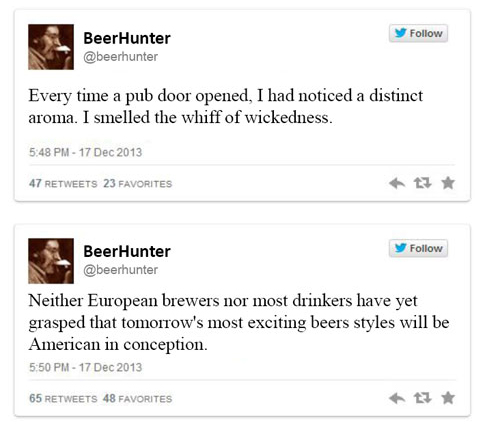Because links to a story about how 200,000 cans of Brewdog Punk IPA had to be recalled is a result of an employee prank keep showing up in my Twitter feed this smorning I remembered that something similar happened at Sun King Brewing in Indianapolis last year.
Given that we cannot agree on who brewed the first Double IPA — the same thought may occur thousands of miles apart at somewhat the same time — this certainly does not mean what happened at Brewdog was derivative. But it is a reminder that little in beer, no matter what modifer (in this case “craft”) in front of the word, is new.
If you missed the Brewdog story, packing manager Graeme Wallace added “Mother F***er Day” to the time stamp on the bottom of Punk IPA cans. He was not fired. Instead, a Brewdog spokesperson said: “At another company, someone responsible for a prank like this might have been given the heave ho. At BrewDog, Graeme was awarded Employee of the Month.”
And if you forgot the Sun King story, it involved 20,000 cans of Wee Mac Scottish Ale with “Tom Brady Sux” stamped on the bottom. This wasn’t too long after Brady and the New England Patriots had defeated the Indianapolis Colts in the NFL playoffs (the “DeflateGate” game). The message qualified as an obscenity for Patriots fans, and certainly wasn’t “Midwest polite.”
“It wasn’t an idea we came up with at all,” said (co-founder) Clay Robinson, referring to Sun King the company. “Every day, we change the thing on the bottom of our cans. One of the guys running the canning lines had to come up with something. Biscuit is his name. So Biscuit put ‘Tom Brady Sux.'”
Sun King is known for its quirky words next to its born-on dates. During the Indianapolis 500, for example, there will be sayings like “Turn left,” or “Go fast.”
Sometimes, there are movie quotes or one-line quips, such as “Drink and Repeat” and sometimes all the can says is “Yummy.”
Biscuit is real. Robinson didn’t reveal his real name because the brewery received numerous profanity-laced phone calls and, Robinson said, one death threat against Biscuit. A week after the first story appeared, he agreed to an interview with the Indianapolis Star that didn’t include his given name.
In addition, the brewery created this video:
 Host Oliver Gray has announced
Host Oliver Gray has announced 